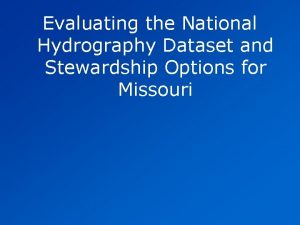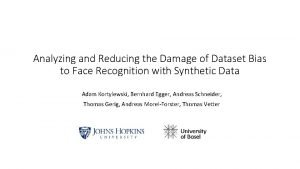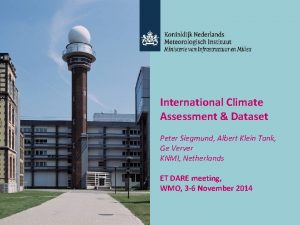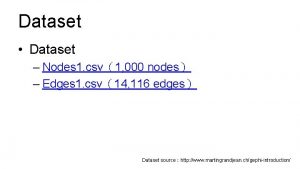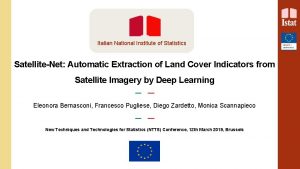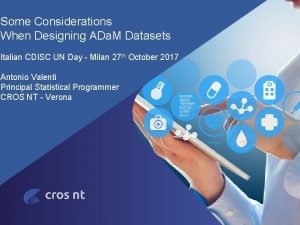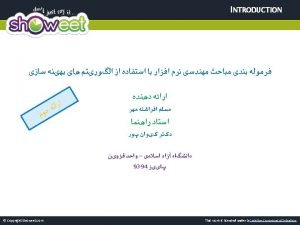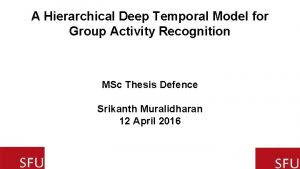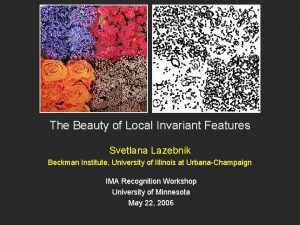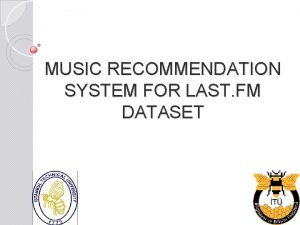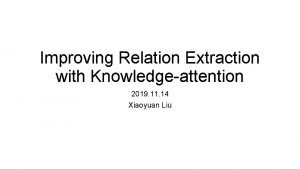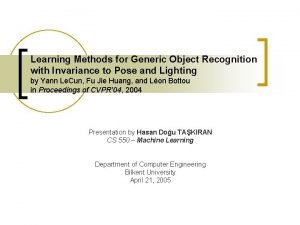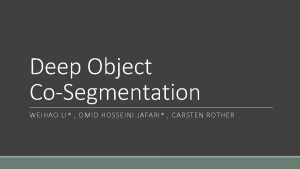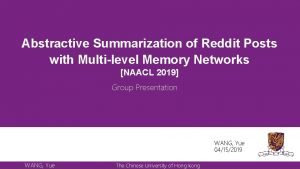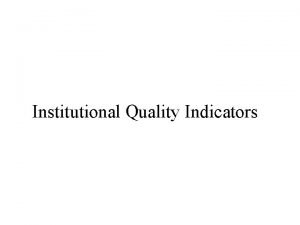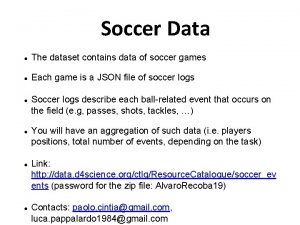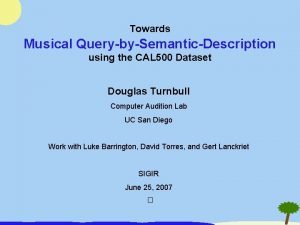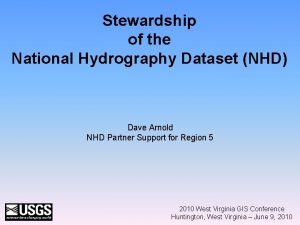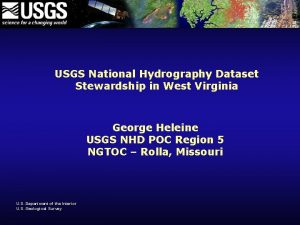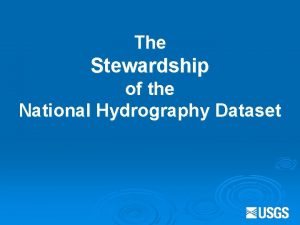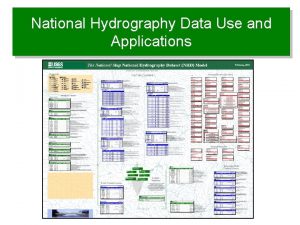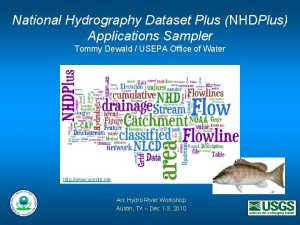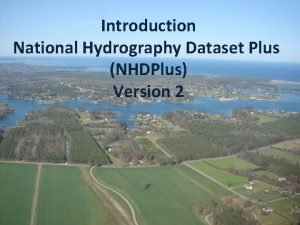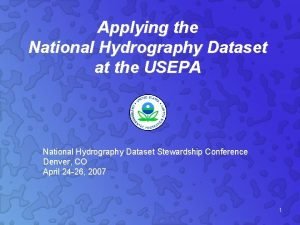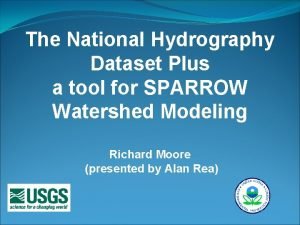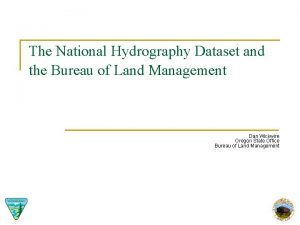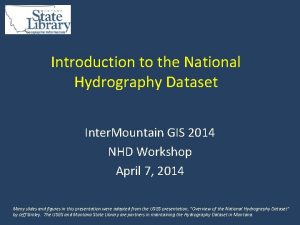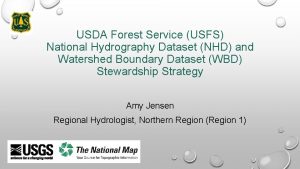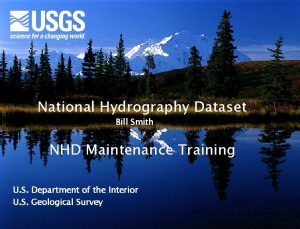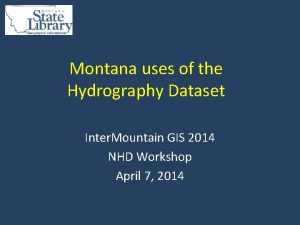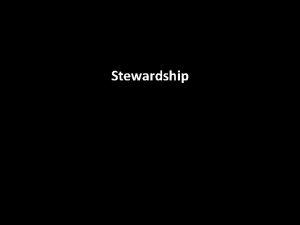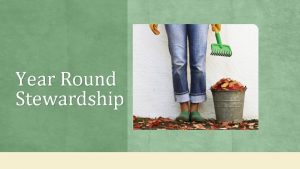Stewardship of the National Hydrography Dataset Stewardship The





















- Slides: 21

Stewardship of the National Hydrography Dataset

Stewardship The community of users become the stewards of the data The USGS facilitates the stewardship process The users evolve the data to best meet their needs The USGS guides the evolution for national continuity



Organization of the stewardship community USGS – continuity of the NHD States - area coordination Maintainers – enhancement of the data Users - advise on requirements

Role of the USGS • Provide program leadership • Provide a forum for stewardship • Provide Standards/continuity • Provide guidance/training/decisions • Manage the overall program

Role of the USGS • Provide, maintain, and develop the model • Provide, maintain, and develop the database • Provide, maintain, and develop editing tool • Host and serve the data • Process maintenance transactions • Quality assurance

USGS Responsibilities Memorandum of Understanding 1. The U. S. Geological Survey Agrees to: 1. Be responsive to the State by processing transactions to the point of distribution in a timely manner. 2. Be responsive to the State by providing the necessary information and assistance to allow the State to stand up a stewardship program. 3. Provide the tools, documentation, and training to edit and update the NHD (Appendix C). 4. Work with the State to develop solutions to incorporate hydrographic data needed by the State, but normally included in the NHD framework. 5. Provide notification, documentation, and assistance in response to submitted updates that do not meet the requirements established and agreed upon by the partners. Return updates that need to be reworked to meet requirements. 6. Provide an Internet accessible reach code allocator and validate reach codes in update submissions.

USGS Responsibilities Memorandum of Understanding 1. The U. S. Geological Survey Agrees to: 7. Notify the State of any changes to the NHD structure, format, or content that may affect the State. 8. Provide clear guidance on expectations for acceptable updates. 9. Provide documentation on validation criteria applied to updates (Appendix B). 10. Provide documentation on formats for update transactions (Appendix A). 11. Provide contact information for management and technical issues (Section XI). 12. Make updates submitted by the steward available in the geodatabase within 45 days.

Role of the State • Provide leadership for state • Provide coordination within state • Provide guidance for state • Resolve issues within state

Role of the State • Inter-state coordination • Interface node to USGS • Provide quality control • Secondary distribution node • Knowledge of hydrography • Editing capability

State Responsibilities Memorandum of Understanding 2. The Montana NRIS agrees to: 1. Act as the single entity the USGS will interface with on stewardship issues within the State. 2. Take stewardship responsibility of 113 Hydrologic Units as documented in Appendix D. 3. Represent the interests of the user community concerned with hydrography in the State by providing the USGS with the most widely accepted representation of the surface water in the NHD. 4. Act as the designated steward for NHD in Montana following the guidelines documented in the Montana Framework Stewardship Document, June 2006. 5. Accept input from other agencies and organizations. Consider any change submitted and coordinate with the Montana NHD Data Stewardship Working Group to decide if the update will be accepted or not accepted, and report the decision publicly. 6. Be responsive to the input received by responding to proposed updates within an agreed upon reasonable time. For purposes of this agreement, that timeframe shall be 45 days. Updates to the USGS shall be provided in a timely manner at intervals to be determined.

State Responsibilities Memorandum of Understanding 2. The Montana NRIS agrees to: 7. Maintain an awareness of the activities of other agencies and organizations involved in stewardship in order to include all applicable input for a given area. 8. Provide contact information for management and technical issues. 9. Provide publicly available information on status of data stewardship activities. 10. Provide updates in the agreed upon format (Appendix A). 11. Provide metadata that clearly describes the sources used in the update and the process used to make the changes. 12. Provide the USGS with updates that meet agreed upon quality standards. Maintain quality assurance as follows a. strive to ensure that the data is error free so that it will work in the i. transaction process, ii. input to the working NHD geodatabase, iii. routine validation checks, iv. distribution, and v. normal applications.

State Responsibilities Memorandum of Understanding 2. The Montana NRIS agrees to: 12. b. perform a quality assurance check on the data before it is delivered to the USGS and ensure that the core content (features, attributes and relationships) identified in the Standards and Quality (QA/QC) Assurance Specifications are included. QA/ QC guidelines are found in the USGS QA / QC Standards (Appendix B). . 13. Rework updates returned for correction and resubmit to the USGS in a timely manner. 14. Utilize nationally consistent reach codes. 15. Provide the USGS with test transactions to demonstrate the ability to meet the standards. 16. Provide the USGS with updates on known and reported errors within 45 days.

Role of the Maintainer • Knowledge of local hydrography • Editing capability • Take initiative for accurate NHD • Be responsive to state and USGS • Coordinate well

USGS interface to states • NSDI liaison • Hydrography area specialist • Works with 5 -6 states • Technology expert • Applications support • Coordination/Continuity • Training • Advocate for hydrography


Stewardship Concerns Ø Ø Ø Ø Will the USGS be there to make this work? Is the editing process too complex? Will the NHD become fragmented? Will the states really maintain the NHD? What about cross-border subbasins? Will states work together? How does this get paid for? Will it last?


Stewardship Concerns Ø Getting the high resolution completed Ø Sufficient throughput on transactions Ø Heavy workload up front Ø Different ideas about the NHD Ø Steep learning curve Ø Importance of communication

 Usgs national hydrography dataset
Usgs national hydrography dataset Kaggle march madness
Kaggle march madness Multiple regression dataset
Multiple regression dataset Undoing the damage of dataset bias
Undoing the damage of dataset bias Eca&d
Eca&d Dataset
Dataset Nodes and edges dataset csv
Nodes and edges dataset csv Eurosat dataset
Eurosat dataset Occds
Occds Sliding window detector
Sliding window detector Cocomo dataset
Cocomo dataset Volleyball dataset
Volleyball dataset Uiuc texture dataset
Uiuc texture dataset Music recommendation system dataset
Music recommendation system dataset Tacred dataset
Tacred dataset 432x18
432x18 Analisi univariata
Analisi univariata Coseg dataset
Coseg dataset Virtual memory reddit
Virtual memory reddit Icrg dataset free download
Icrg dataset free download Soccer dataset
Soccer dataset Cal500 dataset
Cal500 dataset
